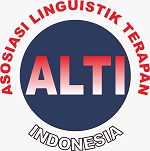Students’ Perception on Teacher-Students’ Interaction in an Online Learning Environment
DOI:
https://doi.org/10.33394/jollt.v9i3.3782Keywords:
Online learning, Students’ perspective, Teacher-students’ interaction,Abstract
References
Arkorful, V., & Abaidoo, N. (2015). The role of e-learning, advantages and disadvantages of its adoption in higher education. International Journal of Instructional Technology and Distance Learning, 12(1), 29–42.
Bakia, M., Shear, L., Toyama, Y., & Lasseter, A. (2012). Understanding the implications of online learning for educational productivity. In Educational Technology. US Department of Education. http://ctl.sri.com/publications/displayPublication.jsp?ID=913
Bušelić, M. (2012). Distance learning – concepts and contributions. Oeconomica Jadertina, 1(2), 23–34. https://doi.org/10.15291/oec.209
Coldwell-Neilson, J., Craig, A., & Goold, A. (2006). Student Perspectives of Online Learning. ALT-C 2006 Research Proceedings, 1, 97–107.
Creswell, J. W. (2014). Research design: Qualitative, quantitative, and mixed methods approaches (4th ed.). SAGE.
Elliott, V. F. (2018). Thinking about the coding process in qualitative data analysis. The Qualitative Report, 23(11), 2850–2861. https://ora.ox.ac.uk/objects/uuid:5304bf7f-6214-4939-9f1b-b64415d4fac1
Fleming, J., & Zegwaard, K. E. (2018). Methodologies, methods and ethical considerations for conducting research in work-integrated learning. International Journal of Work-Integrated Learning, 19(3), 205–213.
Hartshorne, R., & Ajjan, H. (2009). Examining student decisions to adopt Web 2.0 technologies: Theory and empirical tests. Journal of Computing in Higher Education, 21(3), 183–198. https://doi.org/10.1007/s12528-009-9023-6
Keller, C., & Cernerud, L. (2002). Students’ perceptions of eâ€learning in university education. Journal of Educational Media, 27(1–2), 55–67. https://doi.org/10.1080/1358165020270105
Kielmann, K., Cataldo, F., & Seeley, J. (2012). Introduction to qualitative research methodology: A training manual, produced with the support of the department for international development (DfID). Evidence for Action Research Programme. www.write-arm.com
Ku, B. H., & Lohr, L. L. (2000). A case study of Chinese students ’ attitudes toward their first online learning experience. Internationa Review, 51(3), 95–102.
Lam, P., Lee, J., Chan, M., & Mcnaught, C. (2011). Students ’ use of e-learning strategies and their perceptions of e-learning usefulness (S.-M. Barton, J. Hedberg, & K. Suzuki (eds.)). Proceedings of Global Learn Asia Pacific. http://www.editlib.org/p/37346.
Lara, S. (2006). Preparing teachers and schools for the 21st century. Interactive Educational Multimedia, 12, 44–61.
Lefoe, G., Gunn, C., & Hedberg, J. (2002). Recommendations for teaching in a distributed learning environment: The students’ perspective. Australasian Journal of Educational Technology, 18(1), 40–56. https://doi.org/10.14742/ajet.1746
Little, D. (1995). Learning as dialogue: The dependence of learner autonomy on teacher autonomy. 23(2), 175–181. https://doi.org/10.1016/0346-251X(95)00006-6
Malinovski, T., Lazarova, M., & Trajkovik, V. (2012). Learner-content interaction in distance learning models: Students’ experience while using learning management systems. International Journal of Innovation in Education, 1(4), 362. https://doi.org/10.1504/ijiie.2012.052737
Mason, J. (2002). Qualitative researching (2nd ed.). SAGE.
Najeeb, S. S. R. (2013). Learner Autonomy in Language Learning. Procedia - Social and Behavioral Sciences, 70, 1238–1242. https://doi.org/10.1016/j.sbspro.2013.01.183
Rahmawati, F. (2016). E-Learning implementation: Its opportunities and drawbacks perceived by EFL students. Journal of Foreign Languange Teaching and Learning, 1(1). https://doi.org/10.18196/ftl.111
Silverman, D. (2011). Qualitative Research (D. Silverman (ed.); 3rd ed.). SAGE Publication, Ltd.
Singh, G., Donoghue, J. O., & Worton, H. (2002). A study into the effects of e-learning on higher education. Journal of University Teaching & Learning Practice, 2(1), 1–24. https://doi.org/10.1136/jcp.2003.013581
Terzi, S., & Çelik, A. (2005). Teacher-Student Interactions in Distance Learning. The Turkish Online Journal of Educational Technology (TOJET), 4(1), 1303–6521.
Vaismoradi, M., Jones, J., Turunen, H., & Snelgrove, S. (2016). Theme development in qualitative content analysis and thematic analysis. Journal of Nursing Education and Practice, 6(5). https://doi.org/10.5430/jnep.v6n5p100
Vilma, Ž. (2018). Implementing Ethical Principles in Social Research: Challenges, Possibilities and Limitations. Vocational Training: Research And Realities, 29(1), 19–43. https://doi.org/10.2478/vtrr-2018-0003
Downloads
Published
How to Cite
Issue
Section
Citation Check
License
License and Publishing Agreement
In submitting the manuscript to the journal, the authors certify that:
- They are authorized by their co-authors to enter into these arrangements.
- The work described has not been formally published before, except in the form of an abstract or as part of a published lecture, review, thesis, or overlay journal.
- That it is not under consideration for publication elsewhere,
- That its publication has been approved by all the author(s) and by the responsible authorities – tacitly or explicitly – of the institutes where the work has been carried out.
- They secure the right to reproduce any material that has already been published or copyrighted elsewhere.
- They agree to the following license and publishing agreement.
Copyright
Authors who publish with JOLLT Journal of Languages and Language Teaching agree to the following terms:
- Authors retain copyright and grant the journal right of first publication with the work simultaneously licensed under a Creative Commons Attribution License (CC BY-SA 4.0) that allows others to share the work with an acknowledgment of the work's authorship and initial publication in this journal.Â
- Authors are able to enter into separate, additional contractual arrangements for the non-exclusive distribution of the journal's published version of the work (e.g., post it to an institutional repository or publish it in a book), with an acknowledgment of its initial publication in this journal.
- Authors are permitted and encouraged to post their work online (e.g., in institutional repositories or on their website) prior to and during the submission process, as it can lead to productive exchanges, as well as earlier and greater citation of published work.
Licensing for Data Publication
- Open Data Commons Attribution License, http://www.opendatacommons.org/licenses/by/1.0/ (default)
This work is licensed under a Creative Commons Attribution-ShareAlike 4.0 International License.
















